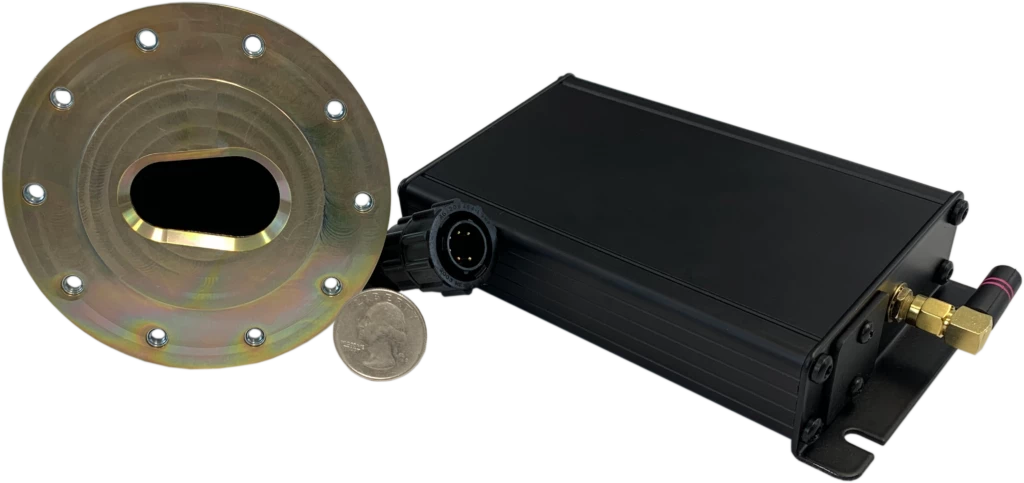Airtext has released a simple laser altimeter for small aircraft to make approaches and landings safer. The app-controlled Land-DAR (Land Distance and Ranging) is configured through an iOS or Android app and calls out altitudes as the aircraft descends.
The approach and landing phase of a flight is one of the most dangerous, making up over 40 percent of accidents. As a result, technology has been developed to minimize the hazards and military and commercial aircraft now have access to an array of GPS systems, approach and landing beacons, and Ground Proximity Warning Systems (GPWS). Combine these with increasingly autonomous flight avionics, and we now live in an age where flight crews carry out takeoffs and landings mainly as a way of keeping their skills sharp.
However, small private aircraft are limited in the landing aids available to them, and many pilots of prop planes rely on methods that Charles Lindbergh would recognize. Because conventional altimeters are not very precise and are distracting to read while touching down on a runway, pilots rely on visual cues to gauge altitude.

Unfortunately, these cues aren't always reliable. An unusually narrow or wide runway, oddly sized trees, or simply poor visibility make it all too easy to misjudge altitude, resulting in everything from a broken undercarriage to a fatal crash. Even skilled older pilots can have problems because depth perception deteriorates with age.
To help prevent such accidents, Land-DAR is designed as a simple device consisting of a lidar unit that can be installed in a pressurized or unpressurized compartment, an interface module to connect to the aircraft's audio system, and connecting wires. The whole thing weighs in at only 14 oz (397 g).
Once installed, the Land-DAR is connected via Bluetooth to an app on an Apple or Android device, which allows the user to configure the mounting offset, setting volume, and desired callout altitudes, which can range for 500 to 5 ft (152 to 1.5 m). When operating, the Land-DAR can measure altitude 100 times per second, and is not susceptible to 5G cellular network interference.
The Land-DAR is certified by the US FAA under the Non-Required Safety Enhancing Equipment (NORSEE) Part 23 aircraft approval.
The video below shows Land-DAR in action.
Source: Airtext





